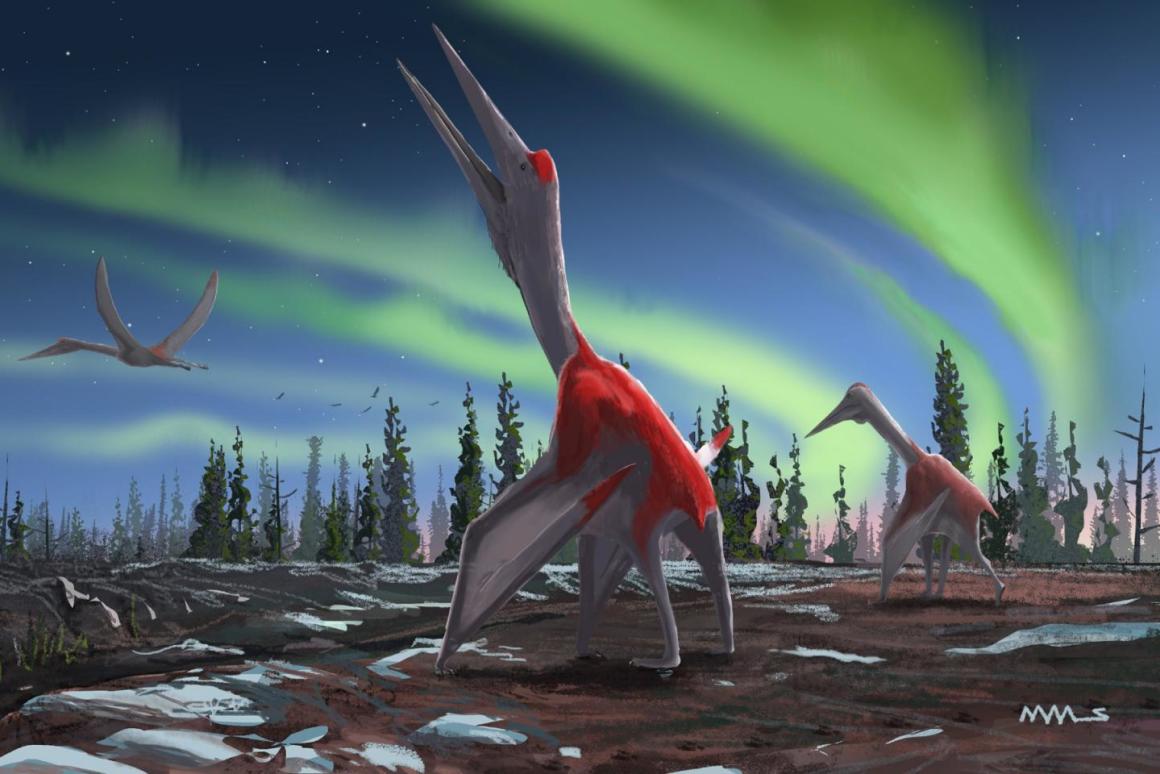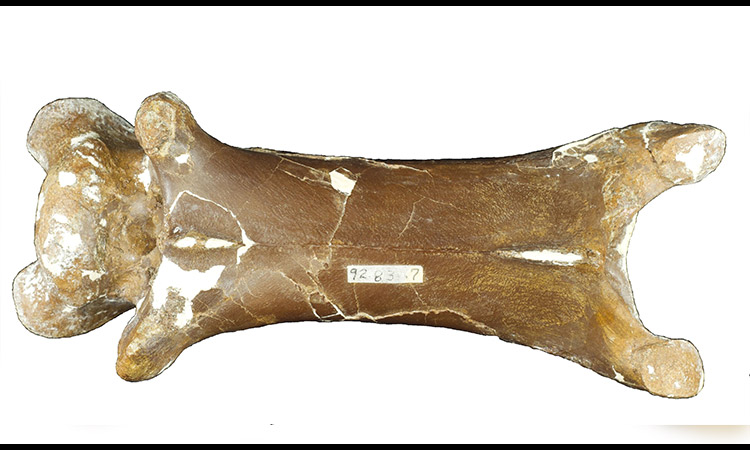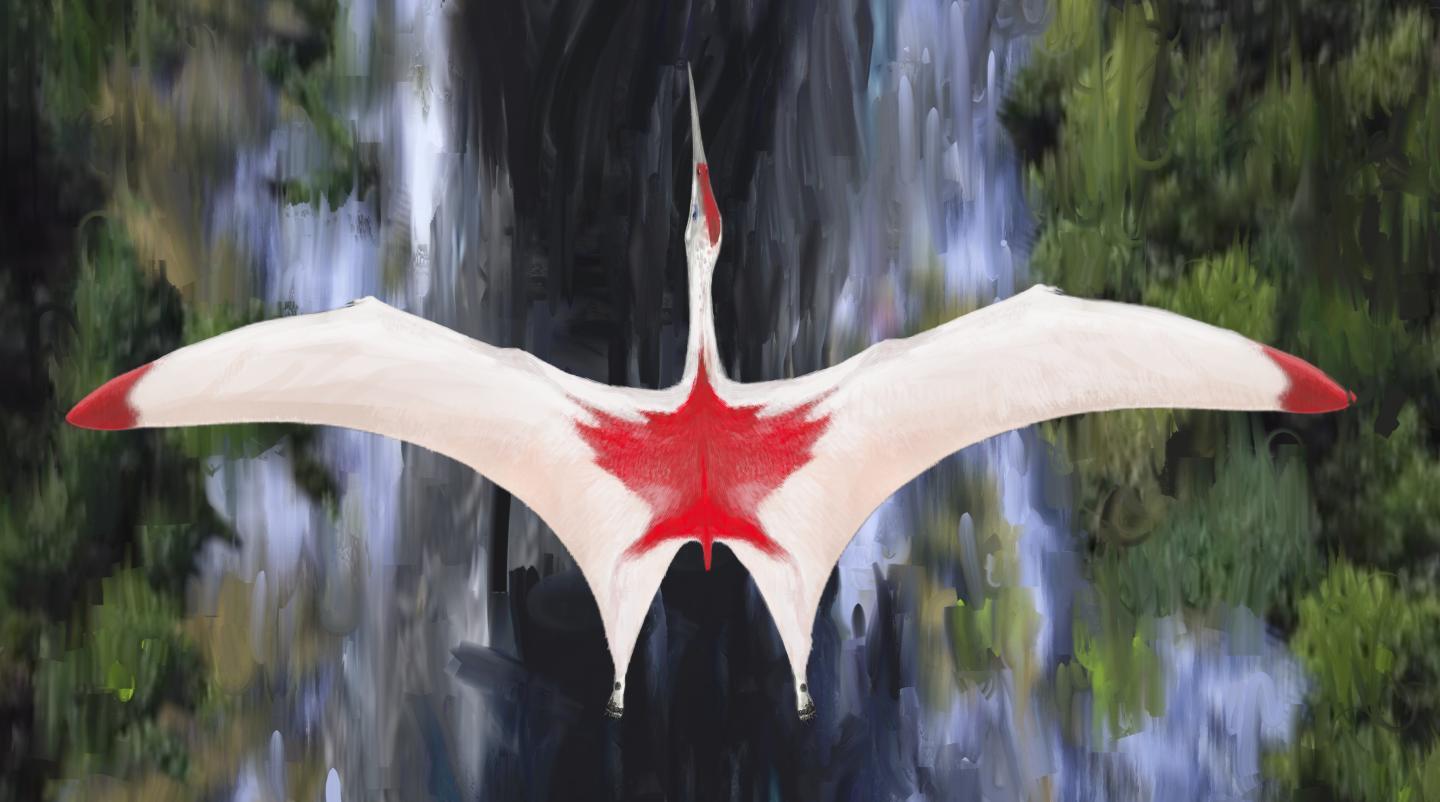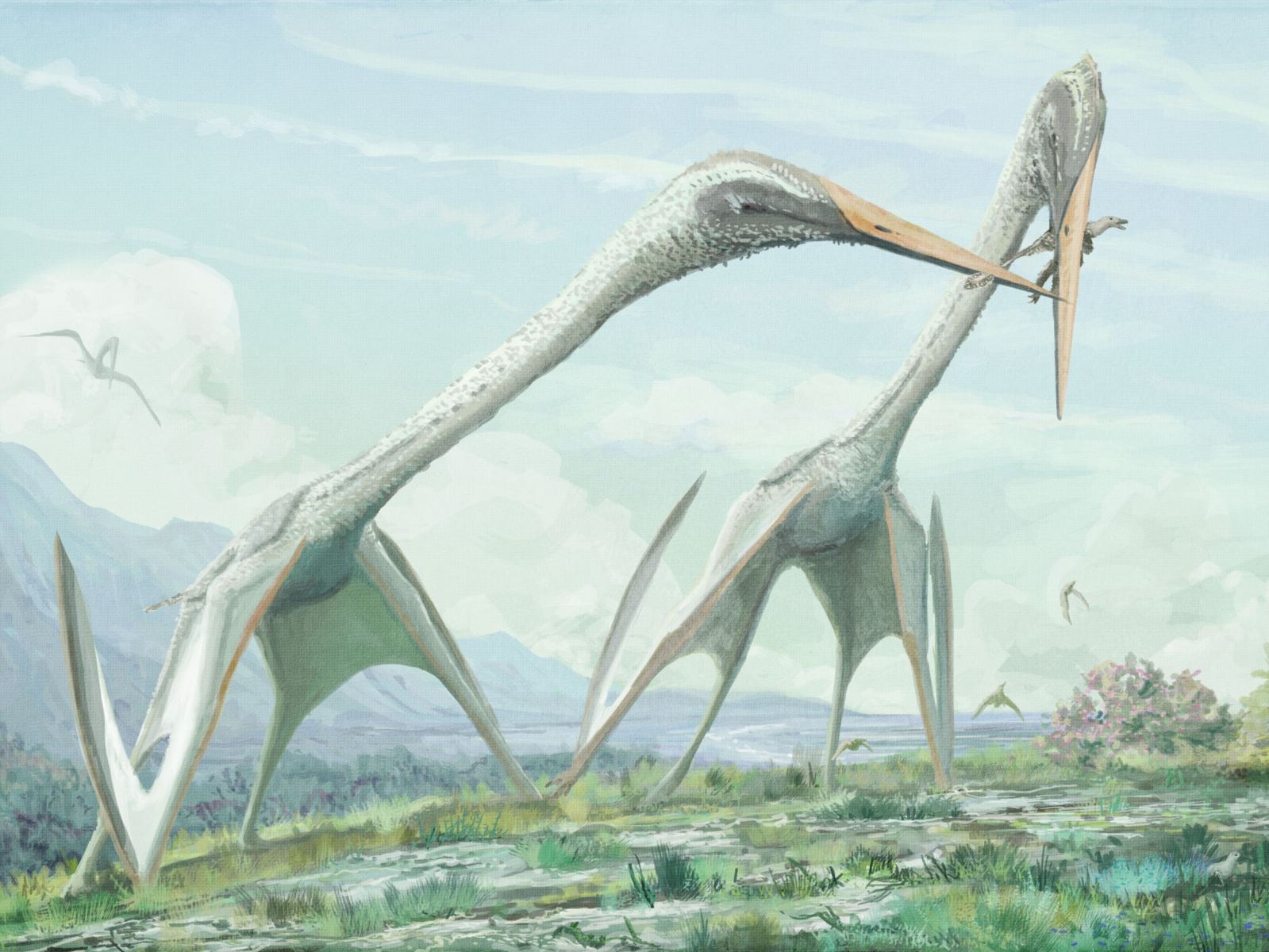The ~77 million year-old bones were first thought to be from a Quetzalcoatlus, which was already known from fossils unearthed in Texas.
In a new study involving scientists from the UK, US and Canada, however, it was noted that there were key differences in the shape of the Alberta animal's vertebrae, cervical bones and leg bones. As a result, it has now been declared a new species, known as Cryodrakon boreas (or "Frozen Dragon of the North").

Like Quetzalcoatlus, it was a member of the azhdarchid group of pterosaurs. And while the main partial skeleton was from a juvenile with a 5-meter (16-ft) wingspan, a neck bone from a larger specimen suggests that its wingspan was likely about 10 m (33 ft). Such a size is in line with that of Quetzalcoatlus, which likely tipped the scales at about 250 kg (551 lb), qualifying it as one of the largest flying creatures to ever live.

Significantly, though, Cryodrakon's bone structure suggests that it may have been even heavier – and stockier – than the Texas animal. This suggests that instead of soaring majestically through the air, the carnivorous reptile likely spent much of its time hunting on the ground, only taking flight in short bursts to escape enemies.

"It is great that we can identify Cryodrakon as being distinct to Quetzalcoatlus as it means we have a better picture of the diversity and evolution of predatory pterosaurs in North America," says Queen Mary University of London's Dr. David Hone, lead author of a Journal of Vertebrate Paleontology paper on the study.

Also taking part in the research were scientists from the University of Southern California, and Canada's Royal Tyrrell Museum of Palaeontology.
According to newatlas



![[WORLDKINGS] Daily Highlights – February 20, 2020 – Half-mouth toothbrush is claimed to clean all your teeth within 20 seconds](https://indochinakings.org/wp-content/uploads/2020/02/0_vhktomwfhkiivw9divvx_1-218x150.jpg)




